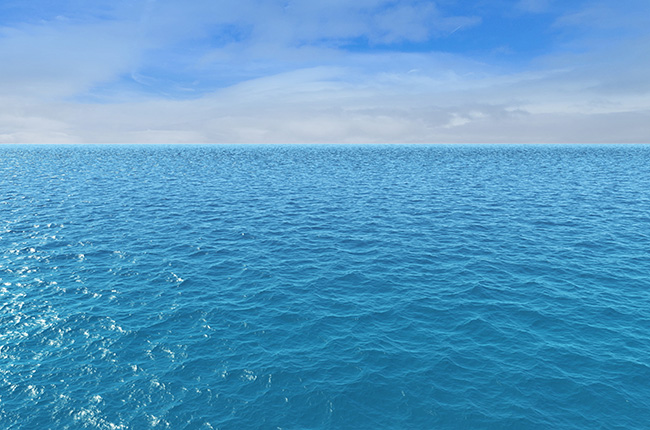The Texas Sea Grant College Program at Texas A&M University awarded $38,000 in research grants to 21 graduate students at three Texas A&M University System institutions.
The students are funded through Texas Sea Grant’s Grants-In-Aid of Graduate Research Program, which provides small grants to students enrolled at Texas A&M University (TAMU), Texas A&M University at Galveston (TAMUG) or Texas A&M University-Corpus Christi (TAMUCC) whose marine- or coastal-related research in any field of study is relevant to Texas, though not necessarily based in Texas. The grants are designed to promote scientific excellence and achievement; they are awarded after a competitive proposal review process.
“The Grants-In-Aid Program is designed to support students in their early careers as they develop their research skills and learn to navigate the grant proposal process,” said Mia Zwolinski, Texas Sea Grant’s research coordinator.
The 2017-18 Grants-In-Aid recipients, their institutions and projects are listed below.
- Hailey Boeck, master’s student in marine biology at TAMUCC, “Bonamia: Does it Mess with Texas? Survey for the oyster parasite Bonamia in Texas bay systems.”
- Kalman Bugica, doctoral student in life sciences at TAMUCC, “Controls upon winter-spring phytoplankton growth and planktonic food web structure in a subtropical estuary.”
- Adam Bynum, master’s student in marine biology at TAMUCC, “Modeling genetic diversity in non-equilibrium populations.”
- Joshua Carter, master’s student in marine biology at TAMUG, “Genetic assessment of habitat specificity and character displacement within a Gulf of Mexico marine contact zone.”
- Adam Chorazyczewski, master’s student in marine biology at TAMUCC, “Bacterial-algal interactions: Is there an effect on growth and lipid production?”
- Meredith Diskin, master’s student in life sciences at TAMUCC, “Differences in habitat structure complexity impact predator-prey interactions.”
- Audrey Douglas, doctoral student in physical and environmental sciences at TAMUCC, “Submarine groundwater discharge derived dissolved organic nitrogen: The overlooked component in coastal systems and nutrient budgets.”
- Nicole Elledge, doctoral student in marine biology at TAMUCC, “Quantifying the effect of stormwater runoff on Enterococcus faecalis population structure and antibiotic resistance in Corpus Christi Bay, Texas.”
- Kesley Gibson, doctoral student in marine biology at TAMUCC, “Mapping fish habitat: Where do they go?”
- Rachel Glazner, doctoral student in ecology and evolutionary biology at TAMUG, “The effects of plant structure on predation success of Callinectes sapidus: Implications of mangrove expansion.”
- Bimal Gyawali, doctoral student in physical and environmental sciences at TAMUCC, “Evaluation of coastal groundwater storage variability: Implications on the effects of climate anomalies on submarine groundwater discharge.”
- Pranav Kannan, doctoral student in chemical engineering at TAMU, “Towards the development of a sensor substrate for the detection of microbiologically influenced corrosion (MIC) in offshore structures.”
- Melissa McCutcheon, doctoral student in physical and environmental sciences at TAMUCC, “Investigating the relationship between oyster reef substrate, sediment geochemistry, and oyster shell preservation in the Mission-Aransas Estuary.”
- Mark McKay, doctoral student in coastal and marine system sciences at TAMUCC, “Changes in the late Holocene paleoenvironment of southeast Texas reverse estuaries evidenced by multiple proxy observations: Request for funds to perform isotopic analysis of foraminiferal microfossils.”
- Megan Mullis, doctoral student in marine biology at TAMUCC, “Antimicrobial production and resistance gene expression in Mission-Aransas National Estuary Research Reserve, Texas.”
- Brianna Myre, doctoral student in biology at TAMU, “A novel method for assessment of feeding state in loggerhead sea turtles (Caretta caretta).”
- Benjamin Ritt, master’s student in marine resource management at TAMUG, “Using UAS based photogrammetry for the study of beach replenishment projects in Galveston, Texas.”
- Thomas TinHan, doctoral student in marine biology at TAMUG, “Spatiotemporal dynamics of movement and habitat use of bull sharks in a Texas estuary.”
- Hongjie Wang, doctoral student in coastal and marine system science at TAMUCC, “Photochemical degradation of dissolved organic carbon in Baffin Bay, Texas.”
- Rachel Weisend, doctoral student in marine biology at TAMUCC, “Evaluating methane production from Texas coastal mangroves.”
- Rachel Woodworth, master’s student in environmental science at TAMUCC, “Developing educational modules to reflect the teachings of mangroves and biogeochemical process of the carbon cycle.”
More information about the Grants-In-Aid of Graduate Research Program is available at http://texasseagrant.org/funding/grants-in-aid-of-graduate-research-program/.
###
Texas Sea Grant is a unique partnership that unites the resources of the federal government, the State of Texas and universities across the state to create knowledge, tools, products and services that benefit the economy, the environment and the citizens of Texas. It is administered through the National Oceanic and Atmospheric Administration and is one of 33 university-based Sea Grant Programs around the country. Texas Sea Grant is a non-academic research center in the College of Geosciences at Texas A&M University. The program’s mission is to improve the understanding, wise use and stewardship of Texas coastal and marine resources.
For more news about Texas A&M University, see https://today.tamu.edu/.
Follow us on Twitter at https://twitter.com/TAMU




